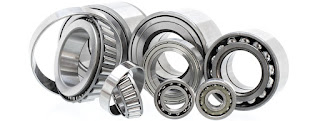A Refresher on the Ball and Roller Bearings
Almost all machines have many distinguished components and use a variety of bearings that allow for smooth and hassle-free functioning. Even though there is a wide variety of a bearing available in the market, the most widely used ones are roller bearings and ball bearings. Both of these types are meant to support dynamic and exemplary operations. The key difference between them is in their design. Ball bearing is composed of small spheres, which results in a small point of contact with the load. Conversely, the cylindrical-shaped Roller bearings’ area of contact with a load is in a line.
Hence, it can support the load more effectively and spread along with it.
Use of
rolling element
There is a rolling element, cage, and bearing rigs that
consist of a bearing in both ball and roller bearings. If the rolling
element in the bearing is a spherical ball then it is just termed a ball
bearing.
Roller
bearings can withstand heavy loads
The roller bearings use rollers rather than balls. This makes
them comparatively more capable for use in axial and radial loads where there
are changes of misalignments. Roller bearings, hence, can be commonly seen in
trucks, buses, and other automobiles.
Distribution
of loads
Ball bearings work on transferring loads from the outer
raceway to the inner raceway. On the other hand, roller bearings distribute the
load over a large area, which allows them to manage the load in a better way as
compared to ball bearings. This situation takes place owing to line contact
that makes roller bearings capable of handling resistance and
shocks.
Which
bearing is better?
There is no simple answer to this question. Both ball and
roller bearings have distinguished capacities and advantages. Roller bearings
can be ideal for shock and high resistance conditions, and ball bearings are
usually good for operability at higher speeds. Ball bearings also possess good
wear resistance, can be replaced easily, and have a long service life. The
biggest highlights of roller bearings include the fact that it generates very
less friction and produces fewer vibrations.
You need to visit the website of popular roller and ball
bearing manufacturers, check out their collections, and ultimately
purchase the bearing type best suited for your specific application.


.jpg)
Comments
Post a Comment